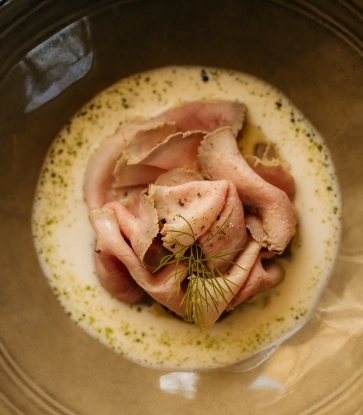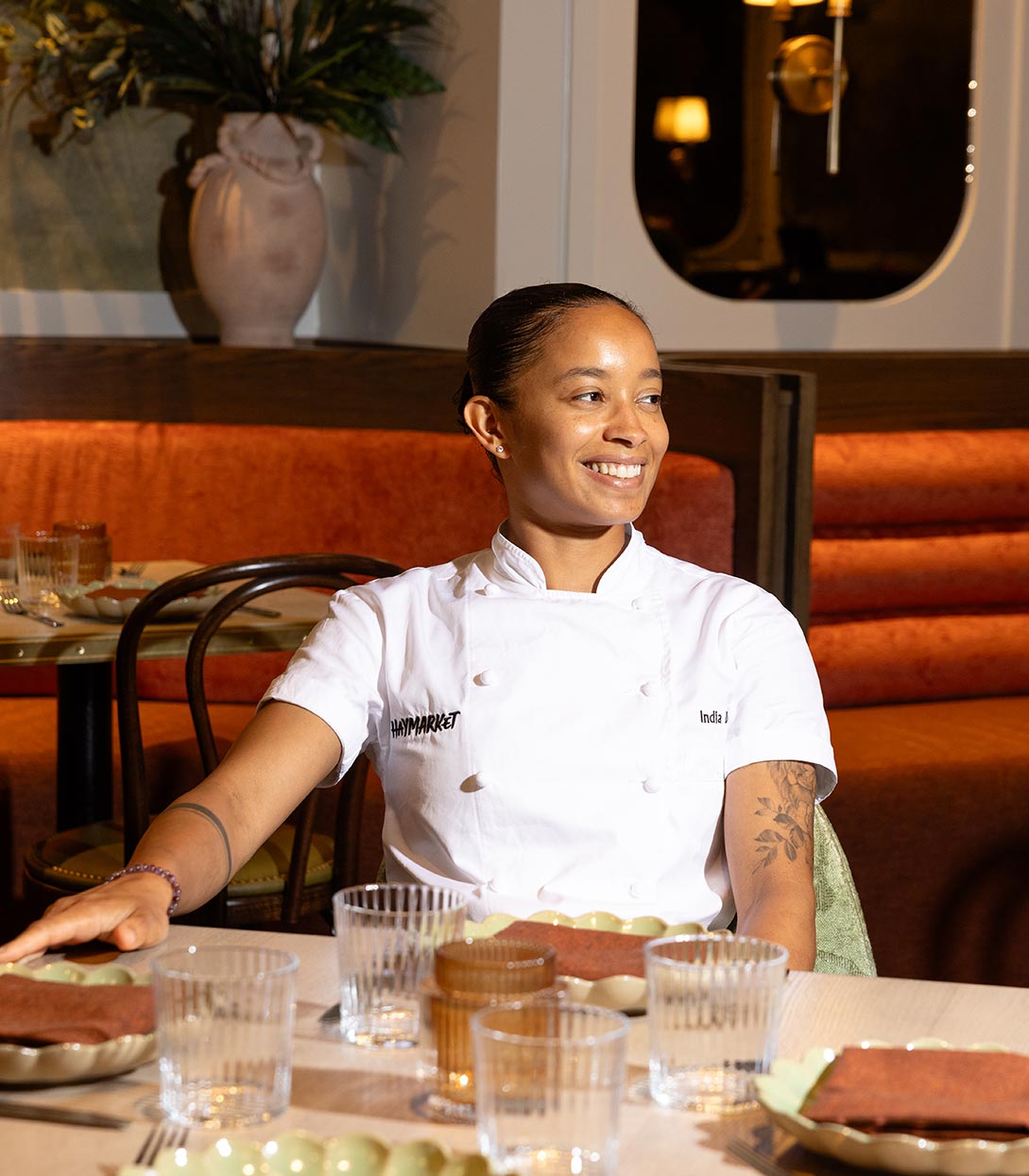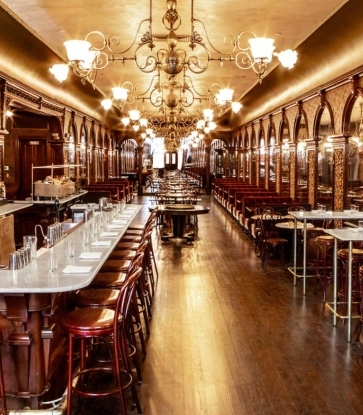Miniature pastry swans, shimmering molded jellies and lemon thyme bonbons were on the menu at The Metropolitan Museum of Art this past week, beautiful edible art made by world class pastry chefs to celebrate the museum’s vibrant exhibition, Visitors to Versailles, 1682-1789.
Host for the evening, Yotam Ottolenghi, the influential and infectiously energetic U.K.-based restaurateur, food columnist and author of seven cookbooks, also relishes his role as an ad hoc culinary ambassador at the museum. His eye-opening food-related events for The Met have ranged from a lavish medieval banquet to Indian street food.

He recruited a team of pastry luminaries to envision the Palace of Versailles’s magnificent formal gardens and fountains as succulent sweets, collaborated with event planner Preston Bailey to set the scene in the museum’s Petrie Court Café, and invited food historian Deborah Krohn to talk about customs and culture in an era of excess that ended with the fall of the monarchy in 1789.
“Sometimes I like to actually dress the part,” Ottolenghi admitted as he welcomed guests outfitted as noblemen in the court of Louis XIV, the king who transformed Versailles from a modest hunting lodge into his own centralized palace of culture and decadence.
Visitors of all kinds—dignitaries, artists, commoners, diplomats—flocked to Versailles, Ottolenghi said, comparing it to a kind of Disneyland where people came to be entertained. They marveled at the gardens, the spectacular fountains and exotic fruits growing in greenhouses, then displayed symmetrically as tall pyramids to adorn the royal table.

The pastry chefs invited to prepare desserts for the museum soiree were also inspired by the gardens. “I love nature, trees,” said Ghaya Oliveira, executive pastry chef at two-Michelin-starred restaurant Daniel, explaining the theme of her tableau of almost too-beautiful-to-eat sweets that she prepared for the event over the course of two weeks. A chocolate and gold face mask of the Sun King gazed down at columns of cone-shaped trees made of pistachio Russe biscuit and grapefruit gelée, along with chocolate sablé terraces filled with Bolivian mousse and coffee crémeux, almond cream and apricot compote tarts, and Tasmanian pepper-and-strawberry Religieuse.

For Dominique Ansel, one of Oliveira’s predecessors at Daniel before launching his Cronut-fueled patisseries in New York, Los Angeles, London and Tokyo, the swan was the quintessential symbol of majesty. Ansel’s giant sugar swan, set against a backdrop of macarons, hid a clever mechanical contraption allowing its wings to flutter in two different directions and beckon visitors to Ansel’s table. In between chatting with guests, Ansel kept busy plating and handing out petit choux swans filled with muscovado, orange blossom ganache and raspberry jam, and topped with white chocolate wings.
Another pastry powerhouse, Janice Wong, flew in from Singapore, home base for her restaurant 2am:dessert bar. Like Ansel, she is always on the move, maintaining dessert bars in Tokyo and Macau. An artist who treats confectionery as a canvas, pushing the boundaries of taste and presentation, Wong creates dozens of edible art exhibits each year, and for The Metropolitan Museum of Art she chose memories of a visit to Versailles for a colorful, re-imagined version of its architecture and gardens. Fondant, gum paste and marzipan structures and swirls were the platform for bonbons—praline and pop rocks, salted caramel and lemon thyme—and tour de force individually sized cakes made of chestnut, almond, sage, quince, lemon curd and hazelnut mousse, topped by a chocolate Versailles medallion.

Ukranian architect turned baker Dinara Kasko has won a wide internet following for the amazing images of cakes she creates on a 3D printer and shapes using silicone molds. It took her over two weeks to design an exquisite three-tiered cake (pictured above) for the Versailles soirée, featuring fruit that would have been grown at the château. While it looked simple from the outside, the 35-pound cake concealed multiple layers of filling, including strawberry, raspberry, sour cherry, rose, marshmallow mousse, mascarpone, vanilla mousse with pastry cream and whipped cream.
Sam Bompas of the London-based multi-sensory experience design studio Bompas & Parr, who also uses 3D technology to make molds for vividly colored jellies, crossed the pond with four large cartons of equipment to prepare for the feast. Along with shimmering wild grape, violet and Champagne jellies, Bompas aimed “to invoke the same spectacle of wonder that would have been felt by guests at the court of Versailles” with a working spirit whirlpool. Called “The Fountain of Eternal Excessive Pleasures” and dispensing a strong drink, it was a perfect metaphor for an evening of brilliant monarchic decadence recreated for 21st century visitors.
Photos by Stephanie Berger.





















